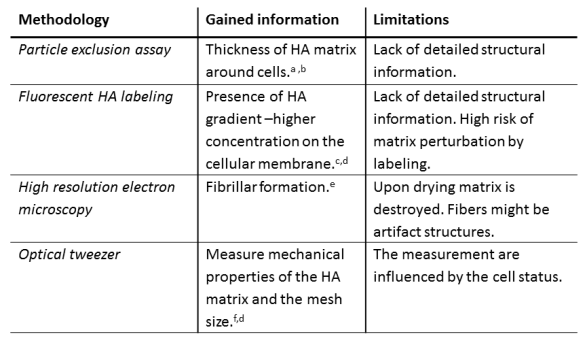The self-organisation of macromolecules into dynamic and hierarchical supra-molecular assemblies is a key feature of biological systems. Among those systems, soft structures, made of flexible polysaccharides, play a key role in the formation of biological hydrogels, as well as in the constitution of cellular membranes as extracellular/pericellular matrix. Even though pericellular coats play a crucial role in many fundamental biological processes, the understanding of their internal organization and functionality is still limited. The issue of delineating those processes which are physically driven from those which are biologically driven is key step in the understanding of how these polysaccharides mediate basic physiological functions. Consequently, it is desirable to move from living cells/tissues to well-controlled models with tunable complexity, and turn attention to biomimetic systems. To investigate such systems, appropriate tools need to be used and developed ; they can be directed to the characterization of self-assemblies of purified components on solid substrates. A toolbox of physicochemical in situ characterization techniques needs to be applied to study macromolecular systems which are typically highly hydrated and display a very low imaging contrast, while undergoing constant reorganization and lacking fixed three-dimensional structures. An overview of methodological approaches used to study the organization of structure of soft biological matter, together with the limitations of each method, is presented in Table 1, with Hyaluronic Acid (HA) used as a typical example as a key constituent of the pericellular matrix (PCM).

The surface-based model of the HA matrix allows to use state of art surface-sensitive techniques for their characterization. Each method by itself is powerful and can provide quantitative information about a few parameters. However no single method alone gives a comprehensive picture of the architecture of the HA film, but the information combined from the different techniques is required. With a toolbox of methods, presented below, many parameters of HA model systems can be quantified, including film thickness, hydration, permeability, amount of incorporated molecules, their orientation and the kinetics of self-organization.
The following chapers will describe : (1) Quartz Crystal Microbalance ; (2)
Spectroscopic Ellipsometry ; (3) Colloidal Probe Reflection Interference Constrast Microsopy
